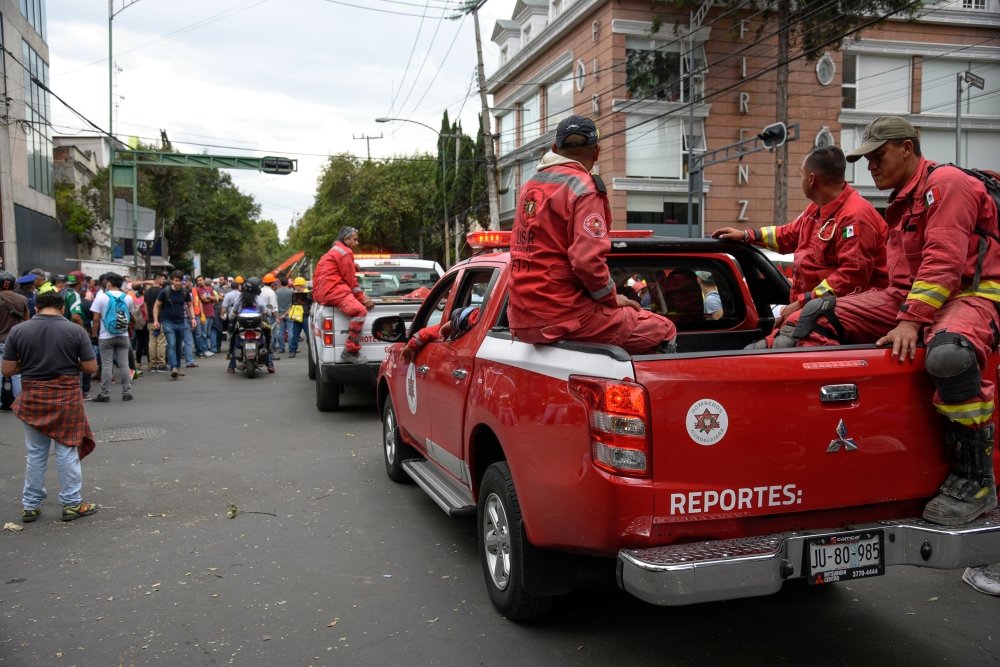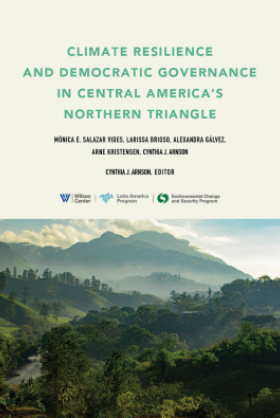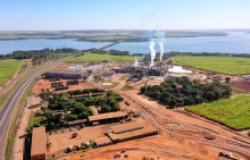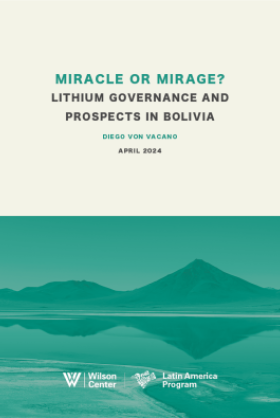Adiós, FONDEN - Mexico’s Approach to Natural Disaster Financing for Risk Reduction and Reconstruction
Due to it's geographical location, Mexico is particularly vulnerable to natural disasters such as earthquakes and hurricanes. How has Mexico previously responded to these natural disasters, and what mechanisms have changed under the administration of President Andrés Manuel López Obrador?

Carlos Kaigen, Shutterstock
Introduction
September 19th, 1985 in Mexico City. September 7th and 19th, 2017 in Chiapas and Puebla. September 7th, 2021 in Guerrero. In Mexico, the month of September is particularly significant. Yes, September 16th is Mexican Independence Day, but beyond that, serious natural disasters in the Septembers of years past remind Mexico and the world of the country’s geographically induced vulnerability to natural disasters.
As central Mexico faces severe flooding, particularly in the municipalities of Tula and Ecatepec, states along the Pacific coast, like Guerrero, are dealing with the aftermath of the September 7th earthquake. At this same time, communities along the Gulf of Mexico are bracing for the next major hurricane. More than 500 schools across 11 states have faced significant damage as a result of the recent floods and earthquake, and the flooding in Tula resulted in several deaths, 17 of which were hospitalized COVID-19 patients at the local IMSS hospital. Mexico’s geography poses serious threats, from flooding and drought to earthquakes, hurricanes.
From these recent examples, it is evident that Mexico’s geography poses serious threats, but how have these been addressed? The country has developed intricate and advanced mechanisms for natural disaster risk assessment and reconstruction, however, Mexico’s strategy changed significantly last fall under the Andrés Manuel López Obrador (AMLO) administration. In October 2020, as Mexico came off the heels of one of the most active hurricane seasons in recent history and the country plunged into its second wave of COVID infections, the Mexican Congress voted to dissolve 109 semi-independent government trust funds. Known in Spanish as fideicomisos, these trust funds cover a wide range of areas, from research to education projects, and encompass over $3 billion in funding. Included in the 109 eliminated funds is the Fideicomiso Fondo de Desastres Naturales(Trust Fund for Natural Disasters), more commonly referred to as FONDEN. This piece offers an overview of Mexico’s risk reduction, assessment, and reconstruction, both historically and presently, now that FONDEN is defunct.
Mexico’s Geography
Not only is Mexico located between two major oceans, the Atlantic and Pacific, that pose significant threats with tropical storms, hurricanes, and flooding, but the country is situated along the world’s “fire belt,” an area that accounts for 80% of the world’s seismic activity. Nearly all of Mexico’s territory is at risk of earthquakes. In fact, in the last five years, Mexico has experienced an average of 23,340 earthquakes per year. While the majority falling between 3 and 4.9 on the Richter Scale, there are notable exceptions to that range, such as the September 2017 earthquakes – an 8.4 magnitude earthquake in the state of Chiapas and ten days later, a 7.1 magnitude earthquake in Puebla – both of which caused significant material damage and loss of life.
FONDEN History & Financing
With its origins in the aftermath of the devastating 1985 earthquake, FONDEN was established in 1996 as a budget line in the Federal Expenditure Budget and became fully operational in 1999. Over the last two decades, it has evolved to meet the changing needs of Mexico’s natural disaster risk management strategy in the emergency, recovery, and reconstruction phases following a natural disaster. Financing for FONDEN came from two sources: Mexico’s federal budget and market-based risk transfer instruments, specifically insurance and CAT (catastrophe) bonds. One of FONDEN’s biggest strengths was its use of CAT bonds which allowed Mexico to secure funding for disaster relief before disaster strikes.
Mexico’s first CAT bond was issued in 2006, for $290 million USD, and has since expanded, with the World Bank most recently issuing $485 million in insurance coverage in 2020 for four years of earthquake and hurricane coverage. Though FONDEN has since been eliminated, Mexico has retained its CAT bond coverage. This total coverage is broken down into four separate classes, each encompassing four distinct categories of natural disasters covered by the CAT bond: low-frequency earthquakes, high-frequency earthquakes, Atlantic Ocean hurricanes, and Pacific Ocean hurricanes. The four payouts ranging from $60 million to $125 million USD require certain criteria in terms of scale of the natural disaster to trigger a CAT bond insurance payout. For example, in both 2009 and 2018, no payout was triggered for the CAT bond, but $50 million was paid out in 2015 following hurricane Patricia and $150 million for the 2017 earthquakes.
Mexico regularly pays a fixed insurance premium to remain eligible for funding from the CAT bond. Upon receipt of payment, the World Bank then transfers these funds to the CAT bond investors, which includes nearly 40 global investors ranging from asset management companies to hedge funds and reinsurance companies. Insurance payments are determined by pre-defined qualifying criteria, meaning that if a natural disaster occurs, an independent calculation agent will determine the payment based on said criteria. The World Bank estimates that payments for earthquakes are available within one month of the qualifying event, whereas payments for hurricanes are available within approximately five months.
FONDEN had two budgetary accounts: FONDEN Program for Reconstruction and FOPREDEN Program for Prevention. The FONDEN program for reconstruction served as the primary bank account for FONDEN, allocating funds to designated financial accounts associated with specific reconstruction programs. Funds from FONDEN could be used for a variety of areas, including low-income housing; public infrastructure at the federal, state, and municipal levels; and specific projects related to the natural environment, such as protected natural areas. This funding was also utilized to “build back better,” the principle of enhancing and/or rebuilding existing infrastructure to make it more secure.
Financial side of natural disasters - how does FONDEN operate?
Mexican law mandated that FONDEN and associated accounts must receive a minimum of .4 percent of the country’s annual federal budget. Though this amount has varied year-to-year, it averaged $800 million USD, with 87% of it going toward FONDEN and the remaining amount distributed among other associated accounts. Mexican law required additional financial resources be transferred from other programs and sources of funding, such as oil revenue surplus, to meet funding needs if the appropriation proved insufficient. Following a natural disaster, FONDEN financed 100% of the reconstruction of federal assets, and 50% of the reconstruction for local assets. An important caveat is that financing for local assets was only required for the first instance of a natural disaster. If disaster were to strike again and these reconstructed local assets were uninsured at the time of a subsequent disaster, the percentage of reimbursement from FONDEN would decrease accordingly.
The first step in the funding process for natural disaster relief and reconstruction was for the Secretaría de Gobernación, more commonly referred to as SEGOB, to declare a natural disaster. Not only did this declaration prompt damage and loss assessments, but it also made funding available to the relevant federal agencies and/or state governments impacted by the event. These agencies and governments then submitted their damage assessments and associated funding requests to SEGOB. Upon review of these applications and determination of specific funding allocations, SEGOB and the Ministry of Finance and Public Credit convened the FONDEN Technical Committee. Once proposals were approved, the Technical Committee would authorize the transfer of funds to a specifically designated subaccount within the FONDEN Trust. From there, the funds were transferred to the various reconstruction agencies.
FOPREDEN Program for Prevention
As its name suggests, the FOPREDEN Program for Prevention – FONDEND’s secondary account - was the more preemptive and proactive body of the two, tasked with disaster reduction and prevention through risk assessment and reduction efforts. For example, states were required to conduct and submit a risk assessment to become eligible for risk mitigation financing. Since the early 2000s, the Mexican government has made a strategic effort to fund preventative measures, however, funding for reconstruction remained substantially greater than that for prevention, with FOPREDEN receiving around $25 million USD. Banco Nacional de Obras y Servicios Públicos (BANOBRAS), Mexico’s state-owned development bank, maintains fiduciary responsibility for these financial accounts.
FONDEN versus the AMLO Administration
In October 2020, the Mexican Congress voted, along party lines and led by the president’s party, Morena, to eliminate the 109 fideicomisos. Proponents, including AMLO himself, have argued that these funds lacked sufficient oversight mechanisms to encourage transparency and accountability, thus inadvertently encouraging wasteful spending and permitting corruption. AMLO has gone so far as to say that these public funds served as “petty cash” for public officials, criticizing that “FONDEN was a bottomless barrel, from which in each emergency 1,000; 2,000; 3,000; 5,000 million pesos were stolen." Instead, AMLO has stated that these funds will be allocated through annual budget votes- a move that critics argue will be subject to political circumstances. AMLO, known for his staunch support for fiscal austerity, has reiterated the promise that funding for these causes will continue to exist and the government will directly administer the funds, rather than through FONDEN. The fideicomisos were officially eliminated on July 27, 2021.
In the months since the Congressional action, as Mexicans faced severe flooding in Tabasco and Veracruz, earthquake tremors in Guerrero, and the wrath of hurricane Grace across Veracruz, Hidalgo, and Puebla, AMLO remains seemingly firm in the decision to eliminate the trusts, stating on September 8th, 2021: “FONDEN disappears, because what we want is to eliminate corruption in Mexico... [without FONDEN] we are attending to the victims better than ever." Since the elimination of FONDEN, government aid is allocated through direct census, such as the $35,000 pesos that will be directly allocated to 65,000 Mexicans affected by Hurricane Grace, "...without intermediaries, without corruption and without delays,“ according to AMLO’s Secretario de Bienestar, Javier May. Though this change toward direct payments puts money into people’s pockets, it may ultimately undermine the ability of municipalities and states to complete the reconstruction of public infrastructure. Moreover, this clientelistic approach further strengthens the population's reliance on the central government - a strategy utilized by the Partido Revolucionario Institucional (PRI), particularly in the 1970s.
Despite these significant changes to natural disaster reconstruction financing in Mexico, the country’s $485 million CAT bond remains in place. Should an event trigger a payout, the money will be transferred to the Mexican treasury rather than the FONDEN trust. Experts say the decision to retain the CAT bond affirms the government’s commitment to disaster risk financing and existing catastrophe bond structure. However, the elimination of FONDEN marks a clear departure from Mexico’s ex ante disaster prevention and risk reduction efforts to a heavier emphasis on ex post disaster relief. Only through the passage of time will the consequences of FONDEN’s elimination and Mexico’s deliberate shift away from natural disaster prevention become apparent.
About the Author


Mexico Institute
The Mexico Institute seeks to improve understanding, communication, and cooperation between Mexico and the United States by promoting original research, encouraging public discussion, and proposing policy options for enhancing the bilateral relationship. A binational Advisory Board, chaired by Luis Téllez and Earl Anthony Wayne, oversees the work of the Mexico Institute. Read more










